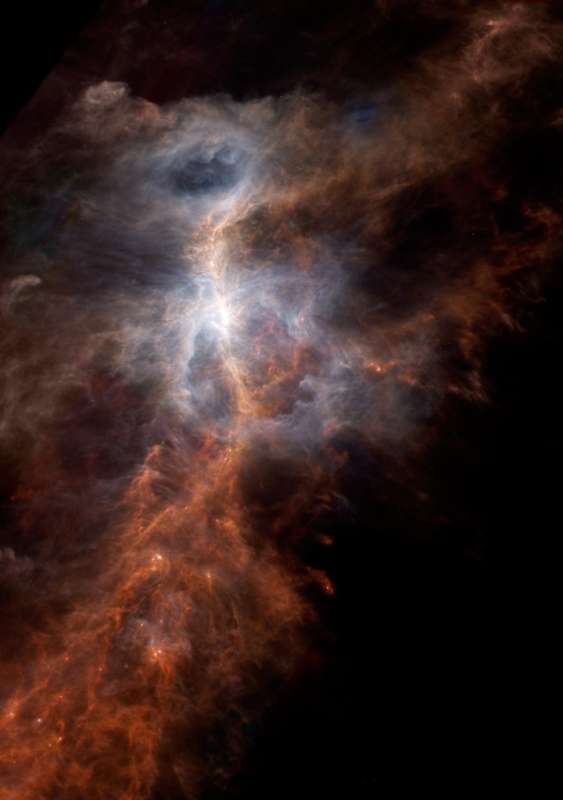Credit & Copyright: ESA/Herschel/PACS/SPIRE
Explanation:
This
dramatic image peers within M42, the Orion Nebula,
the closest large star-forming region.
Using data at infrared wavelengths from the
Herschel
Space Observatory, the false-color composite
explores the natal cosmic cloud
a mere 1,500 light-years distant.
Cold, dense filaments
of dust that
would otherwise be dark at visible wavelengths are shown
in reddish hues.
Light-years long, the filaments weave together
bright spots that correspond to regions of collapsing
protostars.
The brightest bluish area near the top of the frame is warmer
dust heated by the hot Trapezium
cluster stars that also power the nebula's visible glow.
Herschel data has recently indicated
ultraviolet starlight from the hot newborn stars
likely contributes to the creation of
carbon-hydrogen molecules,
basic
building blocks of life.
This Herschel image spans about 3 degrees on the sky.
That's about 80 light-years at the distance of the Orion Nebula.
1999 2000 2001 2002 2003 2004 2005 2006 2007 2008 2009 2010 2011 2012 2013 2014 2015 2016 2017 2018 2019 2020 2021 2022 2023 2024 2025 |
Yanvar' Fevral' Mart Aprel' Mai Iyun' Iyul' Avgust Sentyabr' Oktyabr' Noyabr' Dekabr' |
NASA Web Site Statements, Warnings, and Disclaimers
NASA Official: Jay Norris. Specific rights apply.
A service of: LHEA at NASA / GSFC
& Michigan Tech. U.
|
Publikacii s klyuchevymi slovami:
M 42 - Orion Nebula - Tumannost' Oriona
Publikacii so slovami: M 42 - Orion Nebula - Tumannost' Oriona | |
Sm. takzhe:
Vse publikacii na tu zhe temu >> | |
